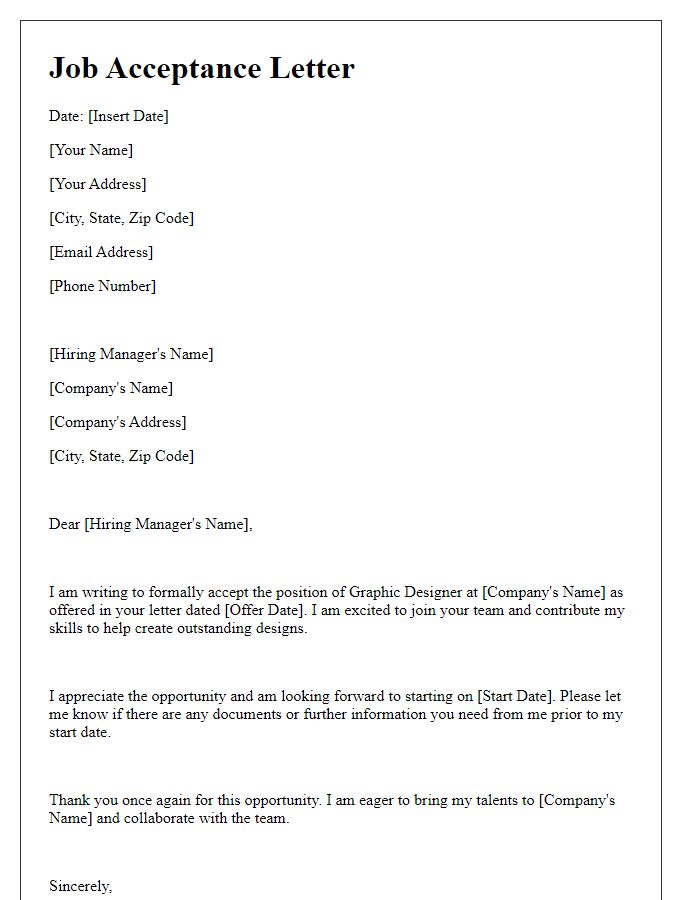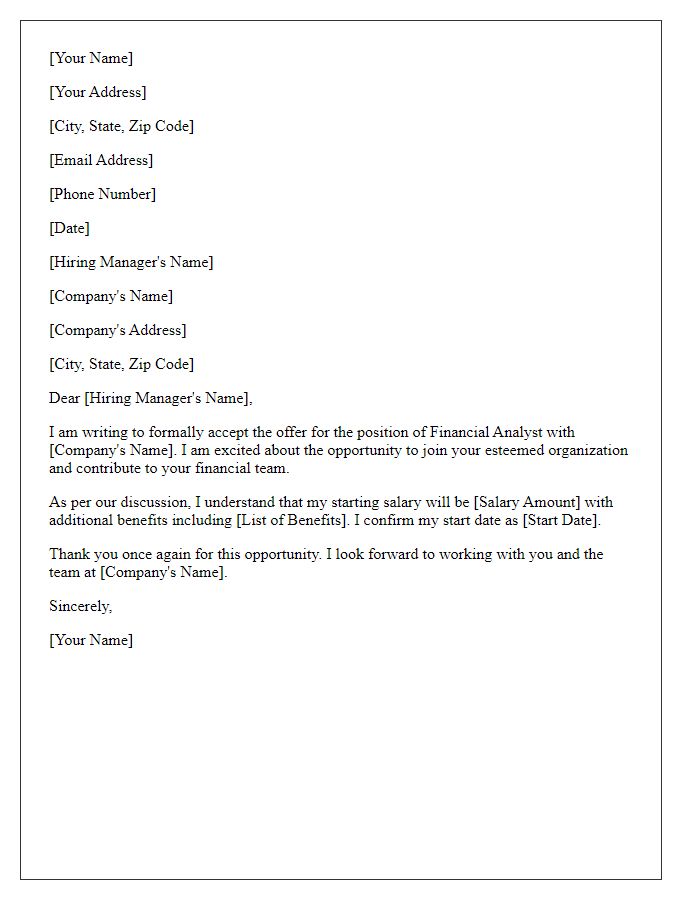Congratulations on your new job position! Accepting a job offer is an exciting milestone, and it's important to communicate your acceptance with professionalism and enthusiasm. In this article, we'll guide you through the essential elements of a well-crafted acceptance letter, ensuring you make a positive impression on your future employer. Ready to learn how to write the perfect acceptance letter? Let's dive in!

Formal Header and Address
An acceptance letter for a job position typically includes a formal header containing the sender's address, date, and recipient's address. The sender's address should include the candidate's name, street address, city, state, and zip code. The date should follow directly beneath the sender's address. Then comes the recipient's address including the employer's name, company name, street address, city, state, and zip code. This structured format establishes a professional tone and provides clear communication between the candidate and the employer.
Expression of Gratitude
A candidate expressing gratitude for a job offer typically highlights appreciation for the opportunity and enthusiasm for joining the company. They may mention specific aspects that attracted them to the position, such as the company's values or the role's responsibilities. The candidate can also reference discussions during the interview process that reinforced their desire to contribute to the organization's success. Clarity on next steps is often included, such as confirmation of the start date or any necessary paperwork. Thankful acknowledgment of the interview team's effort and support during the selection process enhances the positive tone. Overall, this communication serves to solidify a professional relationship before commencing the new role.
Confirmation of Job Details
The confirmation of job details signifies an important milestone in a candidate's career journey. This document typically outlines specific information such as the job title (for instance, Software Engineer), start date (e.g., December 1, 2023), salary (for instance, $80,000 annually), and benefits package including health insurance options and retirement plans. Additionally, the location of the workplace (such as a corporate office in New York City) and reporting structure (for example, direct supervisor: Senior Manager of Tech Development) provide critical context for the candidate. Understanding the expectations, including work hours (like 9 AM to 5 PM, Monday to Friday) and performance evaluation timelines, is vital for aligning with organizational goals. Ensuring clarity on these details fosters a smooth transition into the new role and enhances overall job satisfaction.
Clarification on Next Steps
Prospective candidates often face uncertainty regarding the next stages of the hiring process after accepting a job position. Following a job offer acceptance, candidates should seek clarity about important details such as start dates, onboarding procedures, and orientation schedules. For instance, the company's Human Resources department usually provides information regarding essential paperwork, employee benefits enrollment, and initial training timelines. Furthermore, understanding team introductions and integration plans is crucial for seamless acclimatization to the workplace culture and environment. Quick communication with recruitment officers or direct managers can facilitate a smoother transition into the new role.
Professional Closing and Contact Information
Professional closing ensures a respectful end to the acceptance letter, reinforcing the enthusiasm for the role. The contact information typically includes full name, phone number, and email address to facilitate communication. Important details like job title, company name, and the start date can enhance clarity. Expressing appreciation for the opportunity reflects professionalism and gratitude toward the employer, making a positive final impression.
















Comments